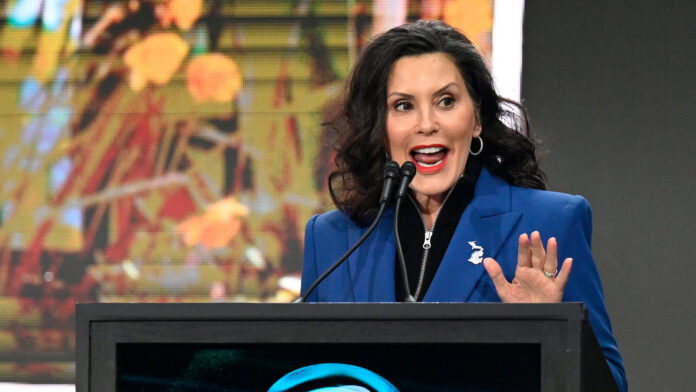The Oval Office Meeting
Michigan governor Gretchen Whitmer met President Trump last Tuesday. They talked in private inside the Oval Office. Whitmer brought slides. She showed numbers on how trade with Canada and Mexico helps Michigan. She said that since 2020 that trade led to $23.2 billion in new investment for the state.
She said the auto supply chain links Michigan factories to plants across the border. She warned that new import taxes push up costs for parts and steel. She said those higher costs hurt makers and workers.
The Scope of the Problem

Michigan finds its economy tied to cars and parts. The three big automakers use many local plants and workers. The state has almost 600,000 manufacturing jobs in the auto sector. It also has over 4,000 parts plants. Whitmer said these jobs face risk if tariffs raise costs for parts and raw material.
Automakers have started to show the cost in their reports. General Motors wrote down $1.1 billion for one quarter. Ford noted $800 million in extra costs for the quarter. Stellantis warned of a big hit for 2025. These numbers matter for local towns that depend on factories and shops.
The Human Cost
Some Michigan businesses have already cut jobs. The Bureau of Labor Statistics shows the state lost 7,500 manufacturing jobs since Trump returned to office. Small firms feel the squeeze. Detroit Axle, a family run parts seller, said it will close a warehouse and lay off more than 100 workers.
The owner said tariffs make it hard to buy parts for the same price they paid in the past. He said his cost for $1 million in goods rose sharply from past years. That change forces hard choices about staying open.
Politics and the Swing State

This meeting also had politics. Michigan was a key state in the last election. Voters there often weigh the cost of jobs more than party lines. Whitmer met Trump now for the third time since January. She has mixed aims.
She wants to protect jobs first. She also speaks to voters who may watch what she does. The meeting gave her a chance to press the case in private. Trump did not promise any fix in public. Still, the meeting shows how much politics and business mix in a state that can decide an election.
My Take
I think the meeting matters. It shows a governor trying to use facts to change a policy that hits workers. The slide numbers on investment and jobs were smart choices for the talk. The automakers’ losses make the risk hard to ignore. Still, the president may weigh other goals too. He may see the tariffs as a way to force trade changes. That stance can stay even when it costs some US firms. In that case Michigan will face a longer fight to protect jobs.
Here is what I would watch next. Look for any public steps from the White House or the Commerce Department that lower tariffs on parts or raw metal. Watch automakers for moves that shift production out of the US. Also watch state actions to help laid off workers get new training or contracts. Those moves can soften the blow if trade policy does not change.
Sources: fortune.com

